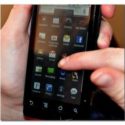21 May Men Use Dating Apps for Casual Sex More Than Women
MedicalResearch.com Interview with:
 Leif Edward Ottesen Kennair PhD
Leif Edward Ottesen Kennair PhD
Professor, Department of Psychology
Norwegian University of Science and Technology
MedicalResearch.com: What is the background for this study? What are the main findings?
Response: The background is all earlier research on sexual behavior, showing both robust individual differences predictors as well as sex differences. We wished to investigate to what degree picture (PBMDA) based mobile dating apps differ from other arenas of sexual behavior.
- How many have used or are current users:
- Nearly half of the participants reported former or current Picture-Based Mobile Dating Apps (PBMDA) use. One in five was a current user.”
Our main prediction was confirmed:
- We found that PBMDA-users tend to report being less restricted in their sociosexuality (as measured with the SOI-R) than participants who have never used PBMDAs
Including specifation:
- This effect was equally strong for men and women. Sociosexuality essentially accounted for the effects of other variables such as seeking a casual sex partner, being comfortable picking up strangers, and self-reported short-term mate value.
Sex differences were also found:
- As predicted, women and men’s reasons for using PBMDAs differed. Relative to women, men emphasized desire for sex as a reason for using PBMDAs.
The most surprising finding was as often due to a discussion with reviewer who was worried whether unrestricted sociosexuality was not more likely a result of use rather than a predictor of use. This improved the detail of our analysis and the conclusion that “When controlling for sex, age and SOI Desire there was no evidence that length of use increased lifetime casual sex partners.”
MedicalResearch.com: What should readers take away from your report?
Response:
- We conclude that the new technology provided by PBMDAs merely re-presents a new arena for short-term sexual behavior, and not necessarily a facilitator of new sexual behaviors.
- In other words what we know about individual differences and sex differences in casual sex interest largely explains who and why people use casual sex oriented dating apps.
- But also the novel finding that use (when controlling for sex, age, sociosexuality) did not result in more partners. I.e. those who have unrestricted sociosexuality have more casual sex partners, but unrestricted users do not have more than other similarly unrestricted people.
MedicalResearch.com: What recommendations do you have for future research as a result of this work?
Response: As this is one of the first empirical studies of this behavior it needs to be replicated. Especially the more surprising finding that use does not give increases in casual sex partners needs reproducing.
Citation:
Individual differences in sociosexuality predict picture-based mobile dating app use
Ernst OlavBotnenMonsBendixenTrond ViggoGrøntvedtLeif Edward OttesenKennair
Personality and Individual Differences
Volume 131, 1 September 2018, Pages 67-73
https://doi.org/10.1016/j.paid.2018.04.021
[wysija_form id=”3″]
The information on MedicalResearch.com is provided for educational purposes only, and is in no way intended to diagnose, cure, or treat any medical or other condition. Always seek the advice of your physician or other qualified health and ask your doctor any questions you may have regarding a medical condition. In addition to all other limitations and disclaimers in this agreement, service provider and its third party providers disclaim any liability or loss in connection with the content provided on this website.
Last Updated on May 21, 2018 by Marie Benz MD FAAD
